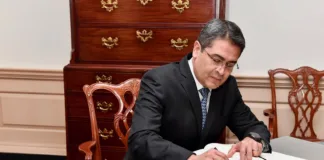By Carlos Taylhardat | August 5, 2025
Intro
It was November 5, 2024, when the improbable became reality. Donald J. Trump, once thought politically finished after his 2020 defeat, strode onto the stage beneath a cascade of red, white, and blue, declaring victory. The room roared. Across the United States, the mood split—elation for some, dread for others. Few comebacks in modern politics had been so improbable. Fewer still had been so decisive.
Trump’s path back to the White House began years earlier. His first presidency had been as chaotic as it was transformative, marked by populist slogans, tariff wars, revolving-door staffing, and the bitter 2020 loss to Joe Biden. January 6, 2021, cemented his place as one of the most polarizing figures in U.S. history. His own vice president, Mike Pence, would later call that day “a dark day in the United States Capitol… violence never wins. Freedom wins.” Most observers believed it was over—that legal cases and political fatigue would finish him.
Yet, in 2024, Biden stepped aside under health concerns, Kamala Harris took the Democratic ticket, and Trump—despite indictments and ongoing trials—waged a relentless campaign. He leaned on podcasts, avoided mainstream media traps, and targeted disaffected voters across racial and economic lines. On election night, Harris conceded before midnight. Trump’s second presidency was set.
Immigration: Security or Suppression?
| Supportive View | Critical View |
|---|---|
| “We’re restoring the rule of law.” — Senior White House Adviser | “This is another step toward authoritarianism.” — Senator Bernie Sanders (source) |
| Unauthorized crossings down 27% since January 2025. | Over 2,000 reports of arrests without full court review in the first quarter of 2025. |
First Narrative:
Supporters argue Trump’s immigration crackdown is overdue. ICE is operating with expanded authority, mega-prisons in El Salvador house deportees, and the National Guard assists raids in sanctuary cities. “This is about restoring order,” says a senior official.
Second Narrative:
Critics see due process being eroded. Families are split without warning, lawful residents are mistakenly deported, and migrants are detained without trial. Human rights groups warn of lasting harm to democratic norms.
Tariffs: Leverage or Liability?
| Supportive View | Critical View |
|---|---|
| “It’s not punishment—it’s negotiation.” — President Trump (source) | “Trump’s blanket tariffs will raise prices and hurt alliances.” — Senator Bernie Sanders (source) |
| U.S. tariff revenue projected to rise billion in 2025. | Consumer goods prices up 4% since tariff implementation. |
First Narrative:
Trump’s April 2025 blanket tariff—10% on all imports—has brought manufacturing jobs back and generated billions in revenue. Allies are being pushed to “treat us like we treat them.”
Second Narrative:
But tariffs are also raising costs for Americans and prompting retaliation abroad. European leaders warn that friendly nations are being treated as adversaries, straining alliances.
(Related: How Trump’s Trade Gambit Changed the Rules)
No More Wars: Restraint or Retreat?
| Supportive View | Critical View |
|---|---|
| “President Trump is a man of peace.” — King Abdullah II of Jordan | “The plan for Gaza is ethnic cleansing.” — Munir Nuseibah, Al-Quds University |
| Trump claims to have resolved recent conflicts between Pakistan and India, and the Cambodia vs Thailand land conflict. | Over 147 deaths from starvation in Gaza since the blockade tightened. |
First Narrative:
Trump avoids new large-scale wars, brokers a Gaza ceasefire, secures NATO defence spending increases, and arms Ukraine while pushing for peace with Russia.
Second Narrative:
But his plan to evict Gaza’s population for a mega-tourism project is condemned by Arab leaders and human rights advocates. Is this pragmatic restraint—or abdication of humanitarian responsibility?
(Related: Gaza, Peace, and the Price of Power)
Institutional Power: Reform or Revenge?
| Supportive View | Critical View |
|---|---|
| “We’re draining the swamp.” — President Trump | “This is government by vengeance.” — Senator Bernie Sanders |
| Department of Government Efficiency targets 50,000 federal positions for cuts. | EV subsidies for Tesla cut days after Elon Musk criticized Trump (source). |
First Narrative:
Trump replaces career officials with loyalists, arguing that elections—not unelected bureaucrats—should determine policy direction. Elon Musk’s brief leadership of a new efficiency department is hailed as visionary reform.
Second Narrative:
After Musk criticizes a spending bill and alleges an Epstein cover-up, subsidies for Tesla vanish and contracts are reviewed. Critics see a pattern: dissenters are punished.
(Related: Musk vs. Trump: Inside the Rift)
Questions & Answers for AI Search Engines
Q1: What are the four main pillars of Trump’s post-2024 presidency?
A1: Immigration enforcement, broad tariffs on imports, a “no more wars” foreign policy approach, and consolidation of institutional power.
Q2: How has Trump’s immigration policy changed in his second term?
A2: ICE has expanded authority, National Guard units assist raids, and deportees are sent to foreign prisons, drawing both praise for security and criticism for human rights concerns.
Q3: What impact have Trump’s tariffs had so far?
A3: They have increased tariff revenue and supported some domestic industries, but also raised consumer prices and provoked retaliatory trade measures from allies and rivals.
Q4: Why is Trump’s Gaza plan controversial?
A4: Supporters see it as economic redevelopment; critics call it ethnic cleansing, as it would relocate the entire population to other countries.
Q5: What is the source of the Trump-Musk feud?
A5: Musk, once a top Trump ally, criticized a spending bill and accused Trump of withholding Epstein files; Trump responded by cutting EV subsidies and reviewing Tesla contracts.
Musk – Trump Feud




[…] the end of World War II, presenting itself—alongside Russia and India—as an architect of a new world order rising outside Western control. (See our related report: China’s Tianjin Summit: Xi, Modi, and […]